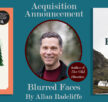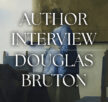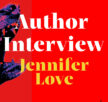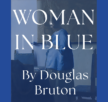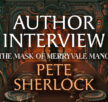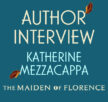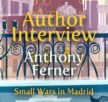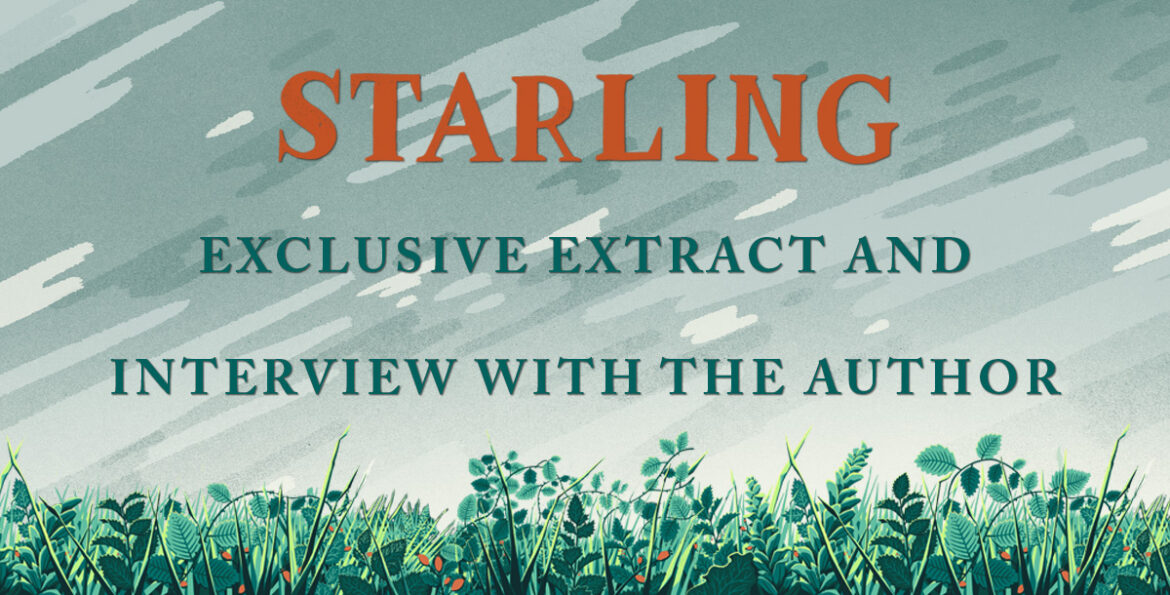

Sarah Jane Butler interview and exclusive extract
- 22nd September 2022
- Category : Author,Blog,Interviews & Blogs
Sarah Jane Butler is the author of Starling, a beautifully written novel about our connection to the world – and people – around us, publishing on 29 September 2022. All Starling has ever known is a nomadic existence, travelling in a converted van with Mar, her strong-willed mother. But one morning, without explanation, Mar leaves and doesn’t come back. Starling must learn to survive without her mother and build a life on her own terms – but can she ever find a place where she truly belongs? Read this interview with Sarah Jane Butler to find out more, and to see an exclusive sneak peek of Starling.
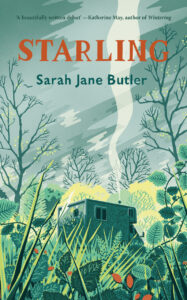
How did you start writing and what does writing mean to you?
Does the epic poem I wrote when I was about eight count? ‘The Fire in the Spire’ went on for pages. But mostly I was busy making dens in the woods and I didn’t start writing till I was in my early 30s.
I began a writing course, but with small children and long work hours I abandoned it. I realised, though, that I could write, and I became a copywriter: writing has been my profession ever since.
Outside work, I wrote short stories first, partly because I only had time for small things, and because I love the short form: it’s liberating because each story can be wildly different, and it’s utterly forensic because every word matters. The first short story I wrote was included in Salt’s Best British Short Stories 2011 and that’s when I began to believe I could write stories people would want to read.
I love the act of writing: it’s like really serious playing. Life is so surprising, complex, scary and beautiful, and each of us lives it in our own way – writing is how I explore and try to understand it.
And fundamentally, I’m a writing geek – I love grammar, syntax, every aspect of language. I’m deeply happy when I’m messing about with words.
If you could describe Starling in one word, what would it be?
That’s a hard question – it’s so many things to me all at once. I’d say, ‘Hopeful’.
What inspired you to write Starling?
I had an image in my mind of a girl trying to find her way home – wherever that was – alone, cross-country, on foot. I could feel her determination and fear, though I didn’t know where they came from. She became Starling, and that search for home runs through the story.
Starling contains beautiful descriptions of wildlife and plants, from the perspective of a character who forages and hunts for her food. How did you approach writing about the natural world, and what research did this involve?
I’ve lived in the countryside all my adult life. I spend a lot of time poking about in ditches, gazing at hedges and sitting by streams. I look carefully and use all my senses – ‘seeing’ nature is so often actually hearing, smelling or knowing where it might be. Writing is the same – I use every sense and take it slowly.
I’ve gathered food from the hedges since I was a child and grown vegetables for decades – like Starling I’m deeply contented when I’ve cooked a whole meal from foods I’ve grown or gathered. Starling knows a lot more than I do though, and I hadn’t tried blackthorn flowers, until she munched on them, so I had to check!
Starling’s mother, Mar, lives by strong anti-consumerist and pro-nature ideals, foraging and living off the land. What inspired you to include these themes in your writing, and how did you approach writing this strongly idealistic character?
I share many of Mar’s ideals though she’s far more radical in the way she lives them. That’s one reason I found her such a compelling character to write. She does things I hesitate to do, speaks out when I might tiptoe around someone I don’t agree with.
Most of us wear blindfolds so we can carry on living, loving and paying our bills and I wanted to explore what’s it’s like to be someone who won’t wear that blindfold, and what it’s like to live with them.
Mar’s a good person at heart but her righteous anger has become corrosive. I asked myself how she and Starling can survive it. That extreme tension between ideals and love was there right at the start when I pictured the two of them, strong women and yet deeply vulnerable.
Starling is your debut novel. How did you find the writing and publishing process?
I made my first notes about Mar and Starling in 2013, though it took me ages to work out how to tell their story. I’ve learned about my writing process along the way: no matter how much time I have, I rarely write more than 500 new words a day; I’m more interested in characters than plot; and it’s fine to take a break from writing, essential even. I had to have a year off, in fact, because I was ill.
I’m so glad to be working with Fairlight, not only because they’re lovely people and committed to publishing new writers, but also because they gave me the freedom and support to write the book I first dreamed of all those years ago.
What’s the most surprising thing you’ve learned through your writing?
When I’m deep in a scene, I find myself writing with senses, emotions and knowledge I didn’t know were there. I don’t have a faith, but writing can be like a kind of worship for me, a connecting with the unknown, with the things that are beyond our day-to-day vision and understanding. I’m trying to bring them to the light, even if only briefly – to create that glimpse of a candle in darkness.
Do you have a writing schedule?
Well, ideally I’d write from ten till one every weekday, but I wrote most of Starling far more haphazardly in the gaps between work and family. I wrote scenes while the potatoes boiled, while I waited outside meetings, in my head. As I revised the final manuscript I was in pain and wrote for weeks in the middle of the night standing up in the kitchen. Essentially, I can write anywhere, any time.
What’s your favourite book/author?
Such a hard question! I’m going to pick a short story by Edna O’Brien, ‘Tough Men’. She draws her characters so beautifully, with a delicate and loving scalpel, that I can read it over and over. It’s witty too. And it’s a lesson in revealing lives through one episode where nothing big happens, but so much does in the small details.
Do you have a pet peeve when it comes to writing? Something you notice yourself doing or something you pick-up in other’s writing?
Over-explaining. Most readers want to be trusted with less information and given space around the character and story so they can bring themselves to it.
Do you have writer’s habit that helps you ‘get in the zone’?
Not really – years of writing for a living mean that I sit down and get going. But if I’m stuck on a scene I’ll go for a walk, tidy a drawer or have a nap – way more effective than gazing numbly at the screen.
What’s a piece of advice you can give to aspiring authors?
Remember that writing is fun and keep going, because no one else will write that story except you!
*
Keep reading for a sneak peek of Starling…
Spring had come too early and frost had blackened the first buds. Under the soil the seeds and roots waited again, and Starling waited too. Everything to its time, Mar always said. Mar would leave when it was time to leave.
At least the van was warm inside. It smelled of woodsmoke, damp wool drying, onion soup.
Dawn was a way off and Mar was still asleep. Starling could hear her breathing, slow and steady below the pebble-dash rattle of the rain on the roof. It had rained ever since they’d arrived, a winter of rain, and the van wouldn’t make it out of the wood even if Mar said it was time. The mud at the start of the track had been axle-deep when they drove in, the puddles glittering in the Luton’s headlamps as they closed the gate behind them, twisting the blue nylon rope back over the post. They were miles from the nearest house, and safe for a while, she hoped.
‘Fate smiles upon us,’ Mar had said, and the bare dark trees had swallowed them up.
Starling slept on her left side, eyes part open, the mattress shaped to her hip, just below the narrow shelf that ran high along the van’s side wall. She fitted into small spaces. Along her shelf lay a line of pale shells, a hagstone ready to hang, a jay’s turquoise feather. Everything that mattered was in the small bag under her head.
She didn’t need to look to see Mar. She would be lying on her back, eyes closed, breathing evenly as a midsummer’s sea swell. Mar released her hair at night and it spread deep red across the pillow, hung in great hanks over the side, touching the floor.
Unlike Starling, nothing about Mar was small. She filled every space. Not that she was a giant – she stood a couple of fingers taller than most, and she carried no fat – but when she came into a room or stepped into a fire circle, people moved back. Only Starling fitted beside her.
*
Starling is publishing 31 August 2022. Pre-order now from Blackwell’s, Waterstones and Bookshop.org.

